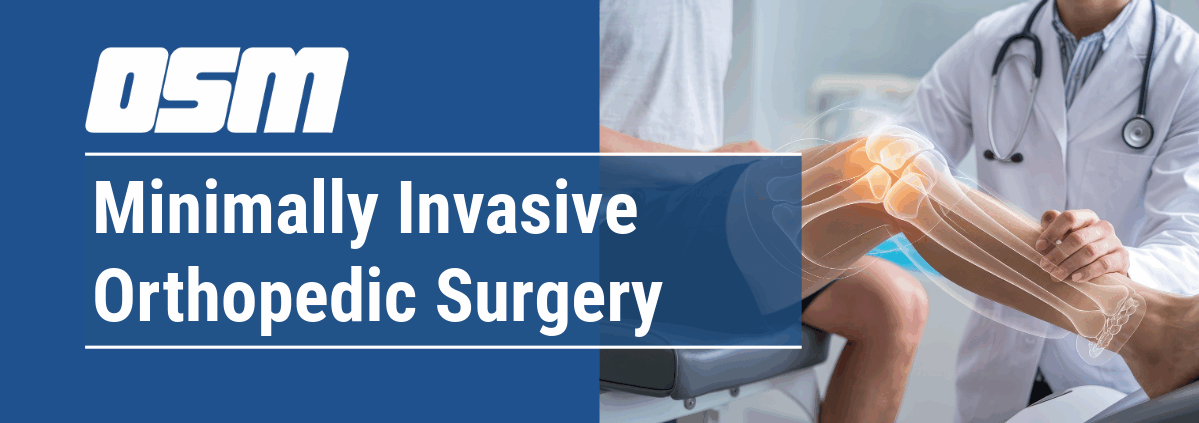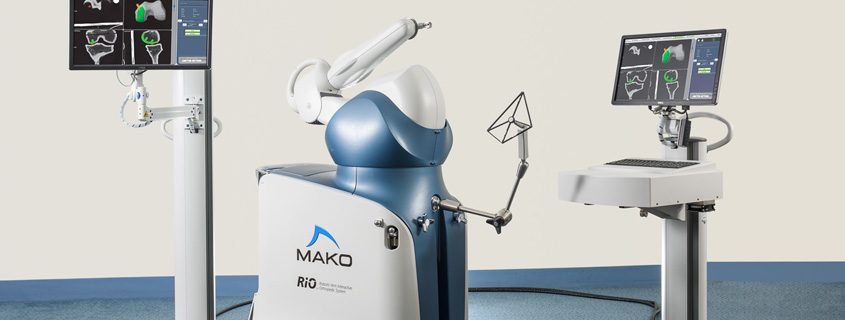Minimally Invasive Orthopedic Surgery
Article featured on Dearborn & Associates
Minimally invasive orthopedic surgery has emerged as a transformative advancement in joint restoration and musculoskeletal care.
Unlike traditional orthopedic procedures that often require large incisions and extensive recovery, minimally invasive surgery focuses on smaller incisions, targeted treatment, and expedited healing timelines.
The shift toward these methods is not solely about comfort—though reduced pain and faster recovery are certainly major benefits. It also represents a broader trend in modern medicine toward preserving natural anatomy and minimizing collateral tissue damage. These techniques are especially beneficial in joint procedures, such as hip and knee replacements, where accuracy, precision, and postoperative mobility are critical for long-term function and quality of life.
Benefits That Extend Beyond the Operating Room
The advantages of minimally invasive orthopedic surgery extend far beyond the surgical suite. For patients, one of the most significant benefits is the decreased trauma to muscles, tendons, and soft tissue. This means that less energy is needed to repair the body after surgery, which can shorten the hospital stay and minimize the need for extensive rehabilitation. Patients can typically expect smaller scars, less postoperative discomfort, and a faster return to normal activities, compared to traditional orthopedic approaches.
In clinical terms, reduced bleeding, lower infection rates, and fewer complications are also frequently reported with minimally invasive procedures. These outcomes not only improve patient satisfaction but also align with broader healthcare goals—such as reducing readmissions and overall healthcare costs. For older adults or those with underlying health conditions, the lower physiological stress of a minimally invasive procedure makes it a safer and more appealing option.
Common Procedures Performed Minimally Invasively
While minimally invasive techniques are used across many orthopedic specialties, they are particularly effective in joint restoration procedures. Some of the most common minimally invasive surgeries include:
- Minimally Invasive Total Knee Replacement
This involves smaller incisions and less soft tissue disruption around the knee joint. Specialized instruments and navigation systems help ensure that the prosthetic components are placed with precision, enhancing longevity and performance. - Minimally Invasive Hip Replacement
Often performed using an anterior approach, this method allows surgeons to work between muscles without detaching them, reducing pain and accelerating recovery time. - Arthroscopic Surgery
Used for conditions like meniscus tears, ligament repairs, or joint debridement, arthroscopy involves inserting a small camera and surgical tools through tiny incisions to visualize and treat the interior of joints with minimal trauma.
The Surgical Experience: What to Expect
Patients considering minimally invasive orthopedic surgery often wonder what the experience entails. After a thorough preoperative evaluation, which includes imaging, functional assessments, and medical history review, a surgical plan is created to meet each patient’s unique goals.
On the day of surgery, patients typically undergo general or regional anesthesia, depending on the procedure and health profile. The surgery itself is performed using specialized instruments that allow the surgeon to operate through small incisions. Advanced imaging systems, including computer-assisted navigation or robotic assistance, may be used to ensure alignment and precision.
Postoperatively, patients are monitored closely and often begin gentle movement within hours of surgery. Most can expect a shorter hospital stay—sometimes going home the same day—and will begin a tailored physical therapy program shortly after. Follow-up appointments ensure progress is being made and that the joint is healing as expected.
Is Everyone a Candidate for Minimally Invasive Surgery?
Not every patient is a candidate for minimally invasive orthopedic surgery, although the majority of joint restoration patients qualify. Factors that may affect eligibility include bone deformities, extensive joint damage, prior surgeries, and specific anatomical considerations. However, advancements in technology and surgical technique continue to broaden the eligibility pool.
Candidacy is determined through a careful consultation process. Evaluation includes that of not only the patient’s physical condition but also their goals, lifestyle, and overall health. This approach ensures that each individual receives the treatment that offers the best possible balance of safety, effectiveness, and recovery outcomes.
Enhancing Recovery Through Modern Rehabilitation
A key component of successful outcomes in minimally invasive orthopedic surgery is the rehabilitation process. Because these procedures preserve more of the body’s natural structure, patients can often begin movement and strengthening exercises sooner. At-home care plans typically involve physical therapy, low-impact activities like walking or aquatic exercise, and close communication with the surgical team.
Patients are taught how to move safely, manage swelling, and set realistic expectations for healing. The result is a smoother, more empowered recovery process—one where patients actively participate in regaining strength and mobility.
The Future of Joint Restoration
Minimally invasive techniques are no longer considered the “alternative”—they’re increasingly becoming the standard. The field of orthopedic surgery continues to evolve with better tools, improved materials for implants, and enhanced visualization technologies. All of these advancements contribute to outcomes that are safer, more predictable, and longer lasting.
The Orthopedic & Sports Medicine Center of Oregon is an award-winning, board-certified orthopedic group located in downtown Portland Oregon. We utilize both surgical and nonsurgical means to treat musculoskeletal trauma, spine diseases, foot and ankle conditions, sports injuries, degenerative diseases, infections, tumors and congenital disorders.
Our mission is to return our patients back to pain-free mobility and full strength as quickly and painlessly as possible using both surgical and non-surgical orthopedic procedures.
Our expert physicians provide leading-edge, comprehensive care in the diagnosis and treatment of orthopedic conditions, including total joint replacement and sports medicine. We apply the latest state-of-the-art techniques in order to return our patients to their active lifestyle.
If you’re looking for compassionate, expert orthopedic and podiatric surgeons in Portland Oregon, contact OSM today.
Phone:
503-224-8399
Address
17355 Lower Boones Ferry Rd Suite 100A
Lake Oswego, OR 97035
Hours
Monday–Friday
8:00am – 4:30pm



